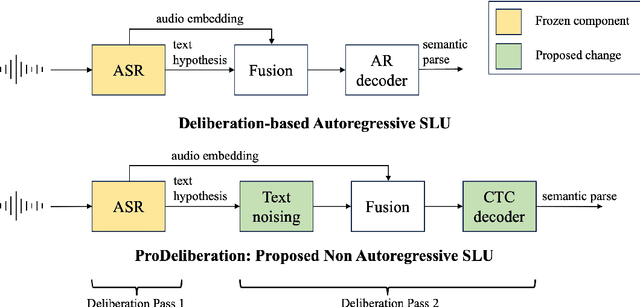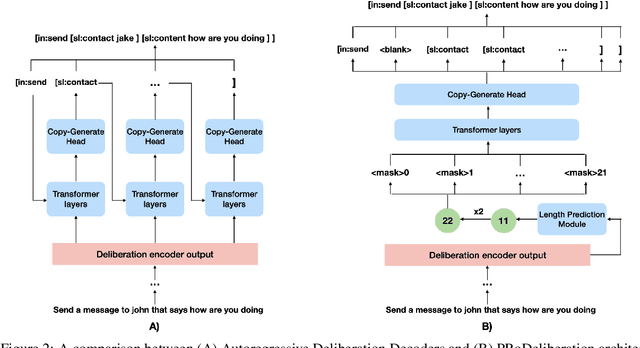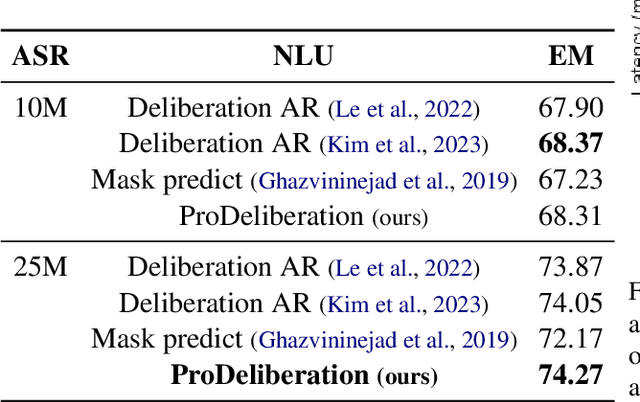Shan Jiang
CASCADE: LLM-Powered JavaScript Deobfuscator at Google
Jul 23, 2025Abstract:Software obfuscation, particularly prevalent in JavaScript, hinders code comprehension and analysis, posing significant challenges to software testing, static analysis, and malware detection. This paper introduces CASCADE, a novel hybrid approach that integrates the advanced coding capabilities of Gemini with the deterministic transformation capabilities of a compiler Intermediate Representation (IR), specifically JavaScript IR (JSIR). By employing Gemini to identify critical prelude functions, the foundational components underlying the most prevalent obfuscation techniques, and leveraging JSIR for subsequent code transformations, CASCADE effectively recovers semantic elements like original strings and API names, and reveals original program behaviors. This method overcomes limitations of existing static and dynamic deobfuscation techniques, eliminating hundreds to thousands of hardcoded rules while achieving reliability and flexibility. CASCADE is already deployed in Google's production environment, demonstrating substantial improvements in JavaScript deobfuscation efficiency and reducing reverse engineering efforts.
FieldWorkArena: Agentic AI Benchmark for Real Field Work Tasks
May 26, 2025Abstract:This paper proposes FieldWorkArena, a benchmark for agentic AI targeting real-world field work. With the recent increase in demand for agentic AI, they are required to monitor and report safety and health incidents, as well as manufacturing-related incidents, that may occur in real-world work environments. Existing agentic AI benchmarks have been limited to evaluating web tasks and are insufficient for evaluating agents in real-world work environments, where complexity increases significantly. In this paper, we define a new action space that agentic AI should possess for real world work environment benchmarks and improve the evaluation function from previous methods to assess the performance of agentic AI in diverse real-world tasks. The dataset consists of videos captured on-site and documents actually used in factories and warehouses, and tasks were created based on interviews with on-site workers and managers. Evaluation results confirmed that performance evaluation considering the characteristics of Multimodal LLM (MLLM) such as GPT-4o is feasible. Additionally, the effectiveness and limitations of the proposed new evaluation method were identified. The complete dataset (HuggingFace) and evaluation program (GitHub) can be downloaded from the following website: https://en-documents.research.global.fujitsu.com/fieldworkarena/.
High-Quality Pseudo-Label Generation Based on Visual Prompt Assisted Cloud Model Update
Apr 01, 2025Abstract:Generating high-quality pseudo-labels on the cloud is crucial for cloud-edge object detection, especially in dynamic traffic monitoring where data distributions evolve. Existing methods often assume reliable cloud models, neglecting potential errors or struggling with complex distribution shifts. This paper proposes Cloud-Adaptive High-Quality Pseudo-label generation (CA-HQP), addressing these limitations by incorporating a learnable Visual Prompt Generator (VPG) and dual feature alignment into cloud model updates. The VPG enables parameter-efficient adaptation by injecting visual prompts, enhancing flexibility without extensive fine-tuning. CA-HQP mitigates domain discrepancies via two feature alignment techniques: global Domain Query Feature Alignment (DQFA) capturing scene-level shifts, and fine-grained Temporal Instance-Aware Feature Embedding Alignment (TIAFA) addressing instance variations. Experiments on the Bellevue traffic dataset demonstrate that CA-HQP significantly improves pseudo-label quality compared to existing methods, leading to notable performance gains for the edge model and showcasing CA-HQP's adaptation effectiveness. Ablation studies validate each component (DQFA, TIAFA, VPG) and the synergistic effect of combined alignment strategies, highlighting the importance of adaptive cloud updates and domain adaptation for robust object detection in evolving scenarios. CA-HQP provides a promising solution for enhancing cloud-edge object detection systems in real-world applications.
Target-aware Bidirectional Fusion Transformer for Aerial Object Tracking
Mar 13, 2025Abstract:The trackers based on lightweight neural networks have achieved great success in the field of aerial remote sensing, most of which aggregate multi-stage deep features to lift the tracking quality. However, existing algorithms usually only generate single-stage fusion features for state decision, which ignore that diverse kinds of features are required for identifying and locating the object, limiting the robustness and precision of tracking. In this paper, we propose a novel target-aware Bidirectional Fusion transformer (BFTrans) for UAV tracking. Specifically, we first present a two-stream fusion network based on linear self and cross attentions, which can combine the shallow and the deep features from both forward and backward directions, providing the adjusted local details for location and global semantics for recognition. Besides, a target-aware positional encoding strategy is designed for the above fusion model, which is helpful to perceive the object-related attributes during the fusion phase. Finally, the proposed method is evaluated on several popular UAV benchmarks, including UAV-123, UAV20L and UAVTrack112. Massive experimental results demonstrate that our approach can exceed other state-of-the-art trackers and run with an average speed of 30.5 FPS on embedded platform, which is appropriate for practical drone deployments.
Multimodal Inconsistency Reasoning (MMIR): A New Benchmark for Multimodal Reasoning Models
Feb 22, 2025Abstract:Existing Multimodal Large Language Models (MLLMs) are predominantly trained and tested on consistent visual-textual inputs, leaving open the question of whether they can handle inconsistencies in real-world, layout-rich content. To bridge this gap, we propose the Multimodal Inconsistency Reasoning (MMIR) benchmark to assess MLLMs' ability to detect and reason about semantic mismatches in artifacts such as webpages, presentation slides, and posters. MMIR comprises 534 challenging samples, each containing synthetically injected errors across five reasoning-heavy categories: Factual Contradiction, Identity Misattribution, Contextual Mismatch, Quantitative Discrepancy, and Temporal/Spatial Incoherence. We evaluate six state-of-the-art MLLMs, showing that models with dedicated multimodal reasoning capabilities, such as o1, substantially outperform their counterparts while open-source models remain particularly vulnerable to inconsistency errors. Detailed error analyses further show that models excel in detecting inconsistencies confined to a single modality, particularly in text, but struggle with cross-modal conflicts and complex layouts. Probing experiments reveal that single-modality prompting, including Chain-of-Thought (CoT) and Set-of-Mark (SoM) methods, yields marginal gains, revealing a key bottleneck in cross-modal reasoning. Our findings highlight the need for advanced multimodal reasoning and point to future research on multimodal inconsistency.
Real-Time Neural-Enhancement for Online Cloud Gaming
Jan 12, 2025



Abstract:Online Cloud gaming demands real-time, high-quality video transmission across variable wide-area networks (WANs). Neural-enhanced video transmission algorithms employing super-resolution (SR) for video quality enhancement have effectively challenged WAN environments. However, these SR-based methods require intensive fine-tuning for the whole video, making it infeasible in diverse online cloud gaming. To address this, we introduce River, a cloud gaming delivery framework designed based on the observation that video segment features in cloud gaming are typically repetitive and redundant. This permits a significant opportunity to reuse fine-tuned SR models, reducing the fine-tuning latency of minutes to query latency of milliseconds. To enable the idea, we design a practical system that addresses several challenges, such as model organization, online model scheduler, and transfer strategy. River first builds a content-aware encoder that fine-tunes SR models for diverse video segments and stores them in a lookup table. When delivering cloud gaming video streams online, River checks the video features and retrieves the most relevant SR models to enhance the frame quality. Meanwhile, if no existing SR model performs well enough for some video segments, River will further fine-tune new models and update the lookup table. Finally, to avoid the overhead of streaming model weight to the clients, River designs a prefetching strategy that predicts the models with the highest possibility of being retrieved. Our evaluation based on real video game streaming demonstrates River can reduce redundant training overhead by 44% and improve the Peak-Signal-to-Noise-Ratio by 1.81dB compared to the SOTA solutions. Practical deployment shows River meets real-time requirements, achieving approximately 720p 20fps on mobile devices.
Distributed satellite information networks: Architecture, enabling technologies, and trends
Dec 17, 2024



Abstract:Driven by the vision of ubiquitous connectivity and wireless intelligence, the evolution of ultra-dense constellation-based satellite-integrated Internet is underway, now taking preliminary shape. Nevertheless, the entrenched institutional silos and limited, nonrenewable heterogeneous network resources leave current satellite systems struggling to accommodate the escalating demands of next-generation intelligent applications. In this context, the distributed satellite information networks (DSIN), exemplified by the cohesive clustered satellites system, have emerged as an innovative architecture, bridging information gaps across diverse satellite systems, such as communication, navigation, and remote sensing, and establishing a unified, open information network paradigm to support resilient space information services. This survey first provides a profound discussion about innovative network architectures of DSIN, encompassing distributed regenerative satellite network architecture, distributed satellite computing network architecture, and reconfigurable satellite formation flying, to enable flexible and scalable communication, computing and control. The DSIN faces challenges from network heterogeneity, unpredictable channel dynamics, sparse resources, and decentralized collaboration frameworks. To address these issues, a series of enabling technologies is identified, including channel modeling and estimation, cloud-native distributed MIMO cooperation, grant-free massive access, network routing, and the proper combination of all these diversity techniques. Furthermore, to heighten the overall resource efficiency, the cross-layer optimization techniques are further developed to meet upper-layer deterministic, adaptive and secure information services requirements. In addition, emerging research directions and new opportunities are highlighted on the way to achieving the DSIN vision.
Read Anywhere Pointed: Layout-aware GUI Screen Reading with Tree-of-Lens Grounding
Jun 27, 2024



Abstract:Graphical User Interfaces (GUIs) are central to our interaction with digital devices. Recently, growing efforts have been made to build models for various GUI understanding tasks. However, these efforts largely overlook an important GUI-referring task: screen reading based on user-indicated points, which we name the Screen Point-and-Read (SPR) task. This task is predominantly handled by rigid accessible screen reading tools, in great need of new models driven by advancements in Multimodal Large Language Models (MLLMs). In this paper, we propose a Tree-of-Lens (ToL) agent, utilizing a novel ToL grounding mechanism, to address the SPR task. Based on the input point coordinate and the corresponding GUI screenshot, our ToL agent constructs a Hierarchical Layout Tree. Based on the tree, our ToL agent not only comprehends the content of the indicated area but also articulates the layout and spatial relationships between elements. Such layout information is crucial for accurately interpreting information on the screen, distinguishing our ToL agent from other screen reading tools. We also thoroughly evaluate the ToL agent against other baselines on a newly proposed SPR benchmark, which includes GUIs from mobile, web, and operating systems. Last but not least, we test the ToL agent on mobile GUI navigation tasks, demonstrating its utility in identifying incorrect actions along the path of agent execution trajectories. Code and data: screen-point-and-read.github.io
PRoDeliberation: Parallel Robust Deliberation for End-to-End Spoken Language Understanding
Jun 12, 2024



Abstract:Spoken Language Understanding (SLU) is a critical component of voice assistants; it consists of converting speech to semantic parses for task execution. Previous works have explored end-to-end models to improve the quality and robustness of SLU models with Deliberation, however these models have remained autoregressive, resulting in higher latencies. In this work we introduce PRoDeliberation, a novel method leveraging a Connectionist Temporal Classification-based decoding strategy as well as a denoising objective to train robust non-autoregressive deliberation models. We show that PRoDeliberation achieves the latency reduction of parallel decoding (2-10x improvement over autoregressive models) while retaining the ability to correct Automatic Speech Recognition (ASR) mistranscriptions of autoregressive deliberation systems. We further show that the design of the denoising training allows PRoDeliberation to overcome the limitations of small ASR devices, and we provide analysis on the necessity of each component of the system.
Multi-attention Associate Prediction Network for Visual Tracking
Mar 25, 2024Abstract:Classification-regression prediction networks have realized impressive success in several modern deep trackers. However, there is an inherent difference between classification and regression tasks, so they have diverse even opposite demands for feature matching. Existed models always ignore the key issue and only employ a unified matching block in two task branches, decaying the decision quality. Besides, these models also struggle with decision misalignment situation. In this paper, we propose a multi-attention associate prediction network (MAPNet) to tackle the above problems. Concretely, two novel matchers, i.e., category-aware matcher and spatial-aware matcher, are first designed for feature comparison by integrating self, cross, channel or spatial attentions organically. They are capable of fully capturing the category-related semantics for classification and the local spatial contexts for regression, respectively. Then, we present a dual alignment module to enhance the correspondences between two branches, which is useful to find the optimal tracking solution. Finally, we describe a Siamese tracker built upon the proposed prediction network, which achieves the leading performance on five tracking benchmarks, consisting of LaSOT, TrackingNet, GOT-10k, TNL2k and UAV123, and surpasses other state-of-the-art approaches.
 Add to Chrome
Add to Chrome Add to Firefox
Add to Firefox Add to Edge
Add to Edge